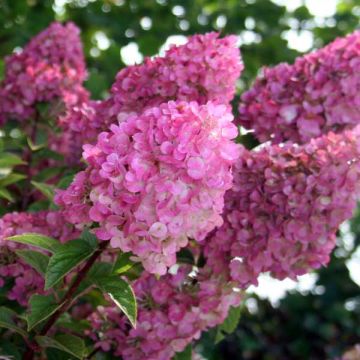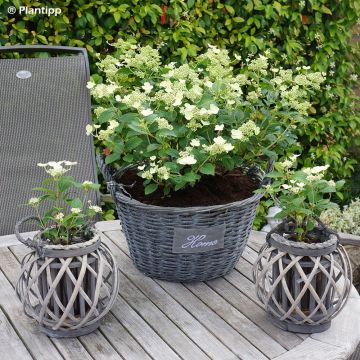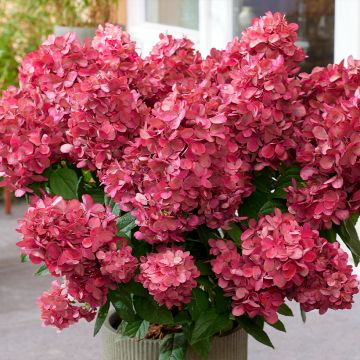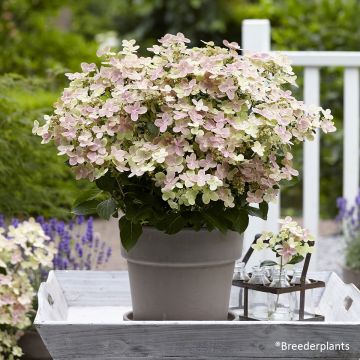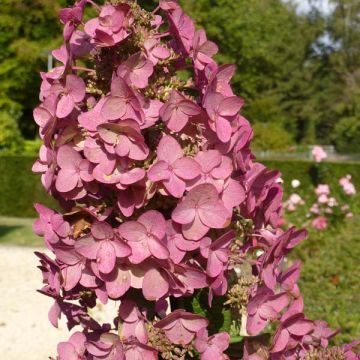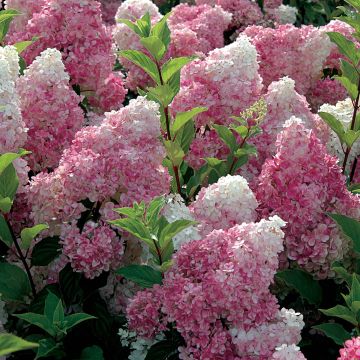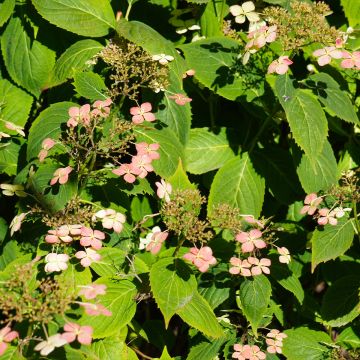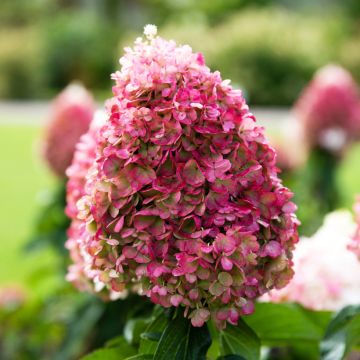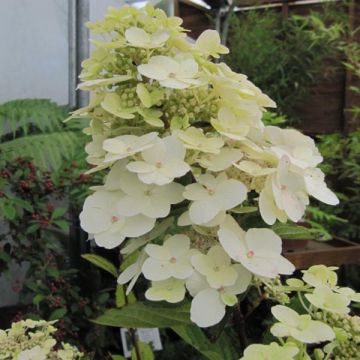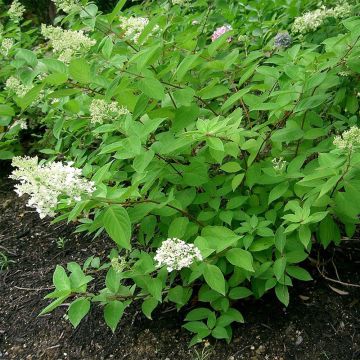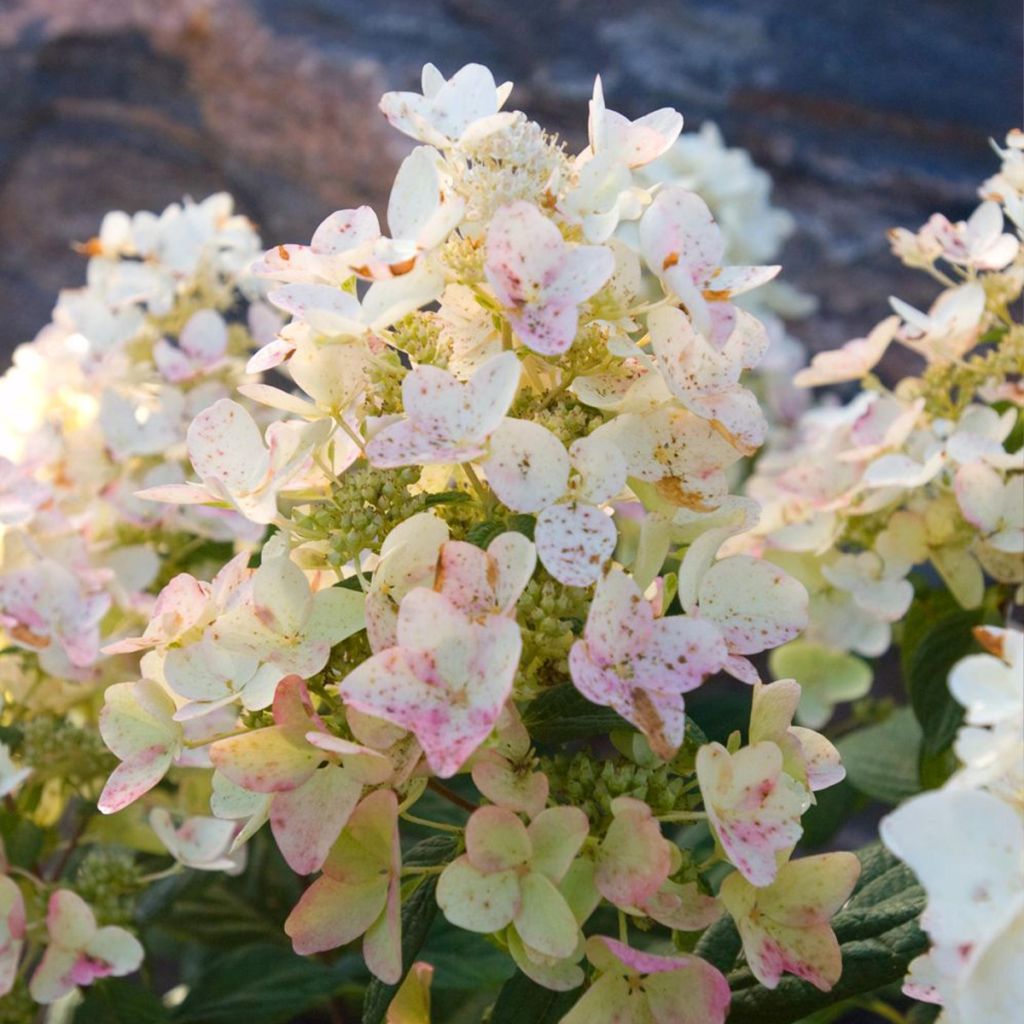

Hydrangea paniculata Tickled Pink
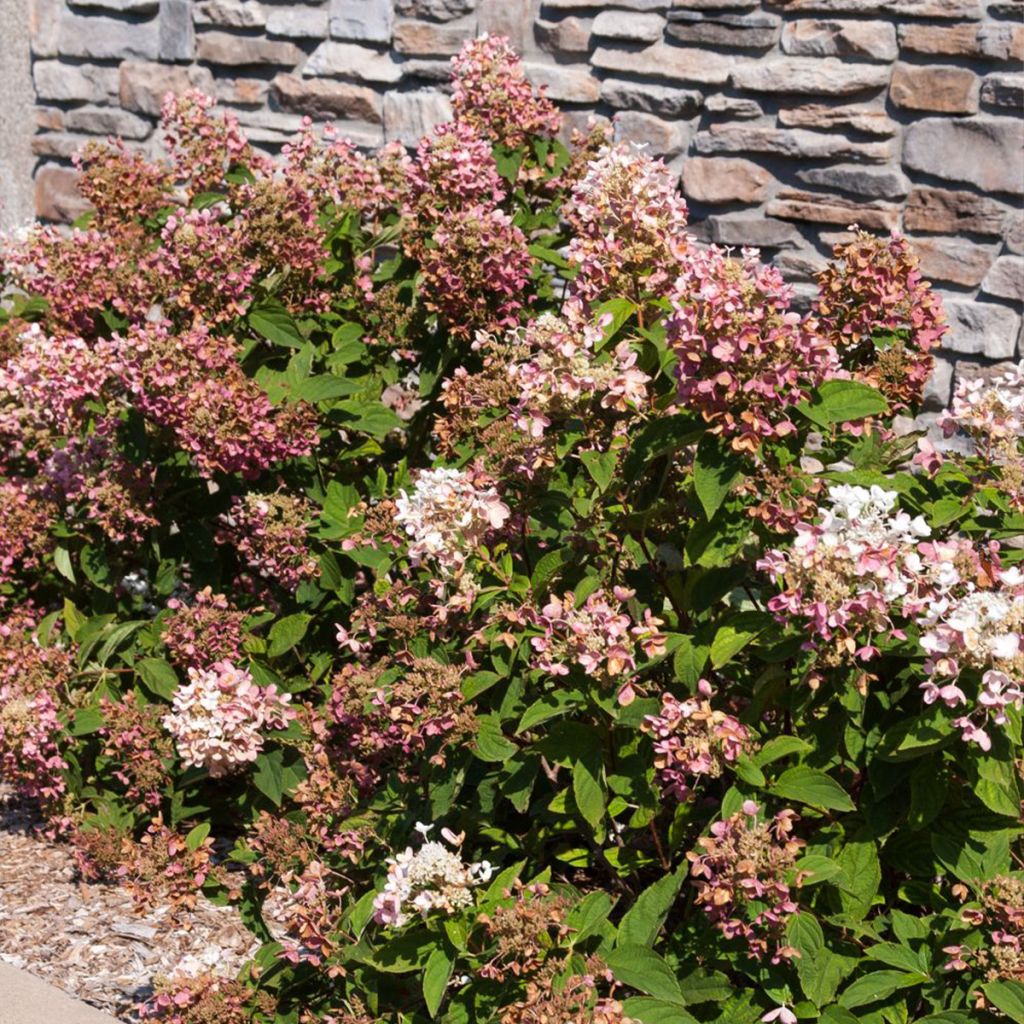

Hydrangea paniculata Tickled Pink
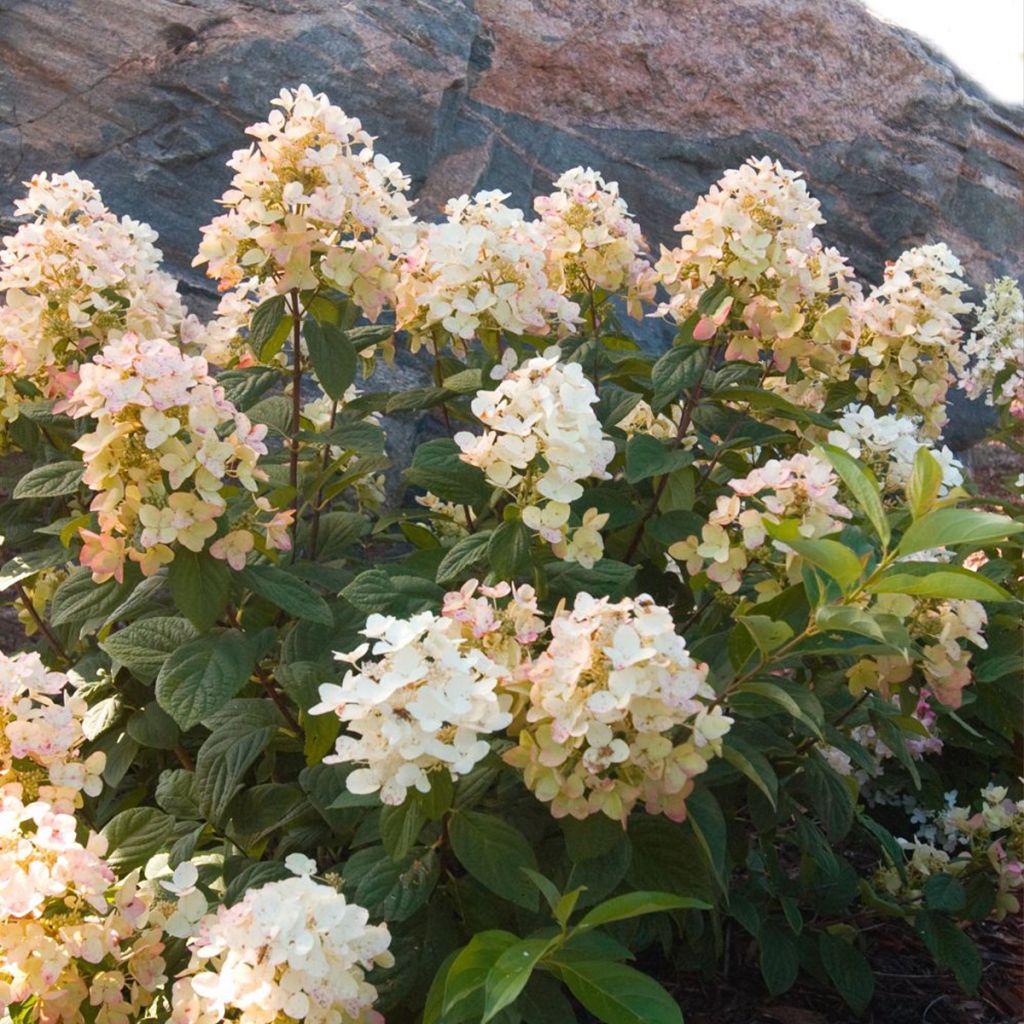

Hydrangea paniculata Tickled Pink
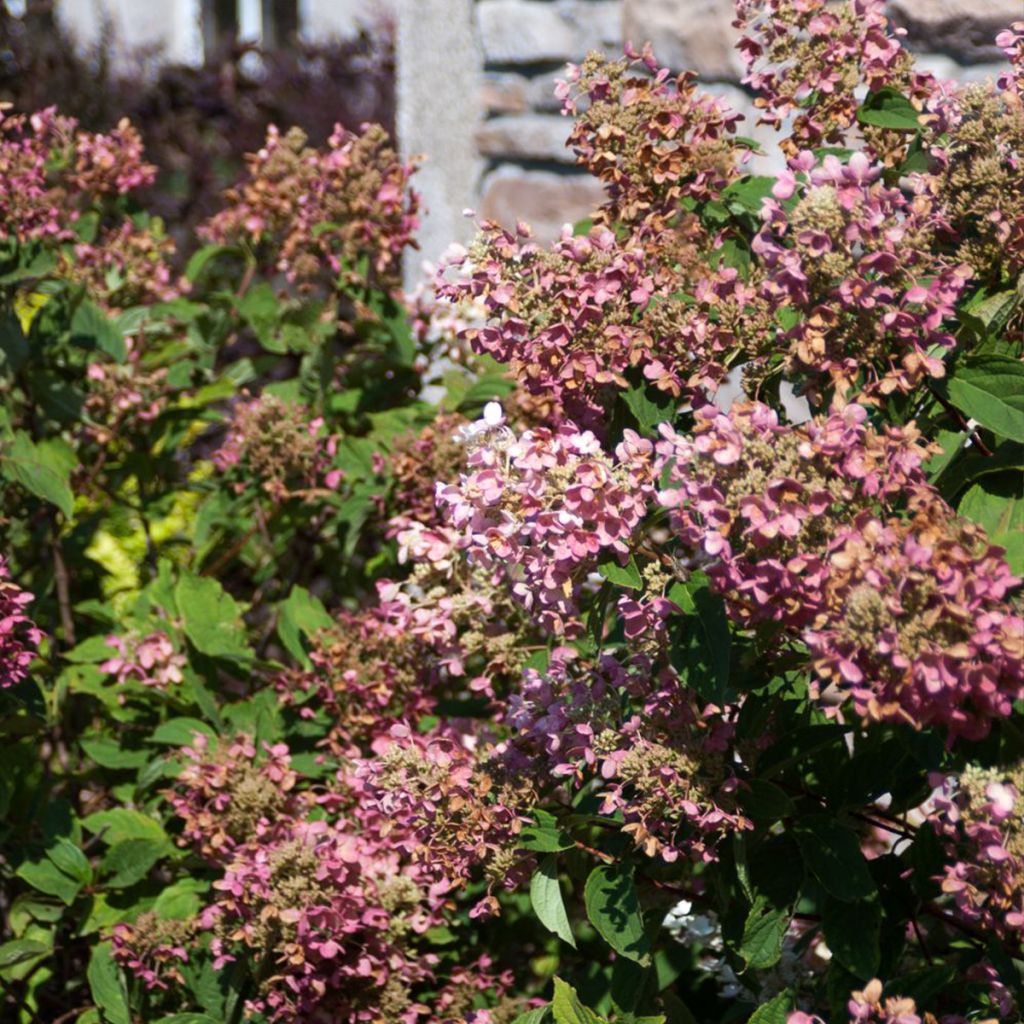

Hydrangea paniculata Tickled Pink
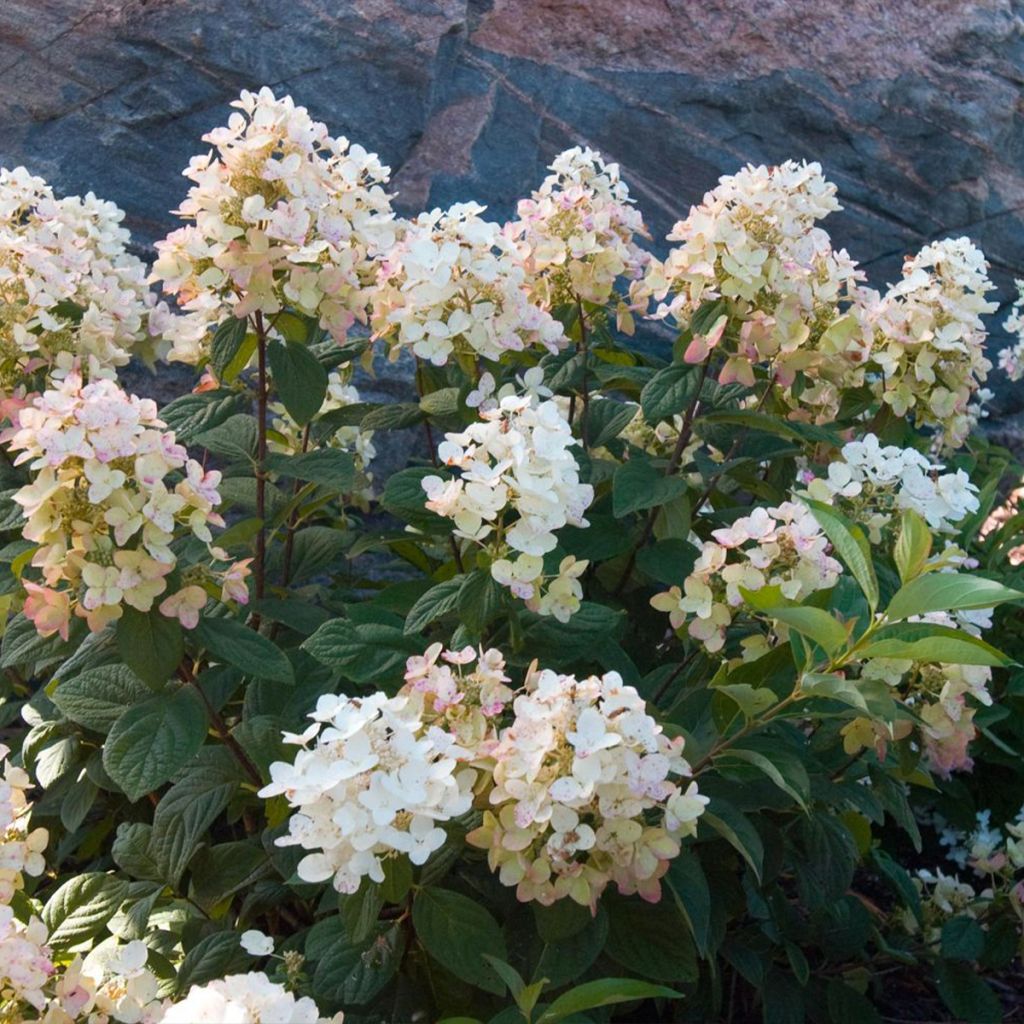

Hydrangea paniculata Tickled Pink
Hydrangea paniculata Tickled Pink
Hydrangea paniculata Tickled Pink®
Paniculate Hydrangea, Panicled Hydrangea, Panicle Hydrangea
This item cannot be shipped to the selected country
Delivery charge from €5.90
Delivery charge from €5.90
Delivery charge from €5.90
More information
Schedule delivery date,
and select date in basket
This plant carries a 24 months recovery warranty
More information
We guarantee the quality of our plants for a full growing cycle, and will replace at our expense any plant that fails to recover under normal climatic and planting conditions.
From €5.90 for pickup delivery and €6.90 for home delivery
Express home delivery from €8.90.
From €5.90 for pickup delivery and €6.90 for home delivery
Express home delivery from €8.90.
From €5.90 for pickup delivery and €6.90 for home delivery
Express home delivery from €8.90.
Does this plant fit my garden?
Set up your Plantfit profile →
Description
The Hydrangea paniculata 'Tickled Pink' is a variety of paniculate hydrangea with a compact habit, that can be grown in large containers. Well-branched, this hydrangea stands out with its large panicles of white flowers, appearing early in the season and lasting throughout the summer, before turning pink in autumn. Accommodating to different soil types, it does not require acidic soil to grow and is content with a neutral, or even slightly alkaline soil, as long as it does not dry out too much. Very hardy, it is the ideal hydrangea for beginners in the garden.
The Hydrangea paniculata, also known as Mountain Hydrangea, is a species of hydrangea belonging to the Hydrangeaceae family, native to deciduous forests in China and Japan. Particularly hardy, it is easy to cultivate in any good garden soil that remains moist. In the past, only large-growing varieties existed, but breeders have worked extensively on this species to introduce numerous compact cultivars. In the 1970s, botanist Jelena de Belder introduced the variety Pink Diamond to the market, which quickly gained attention with its white flowers that change colour during flowering.
The variety 'Tickled Pink' is an improvement obtained by the American Michael Dirr, horticulturist and professor at the University of Georgia in the United States. More compact, as it does not exceed 1.50 m (4 ft 11 in) in height but can spread in width, it bears large panicles of 20 to 25 cm (7.9 to 9.8 in) white flowers starting from the end of June. In August-September, these gradually change colour to a beautiful pink hue, preceding the leaf fall. The hardiness of this shrub is very good, down to -25°C (-13 °F), which allows it to be planted practically anywhere in France.
The Hydrangea paniculata 'Tickled Pink' is the ideal hydrangea for gardeners frustrated by not being able to plant Hydrangea macrophylla due to unsuitable soil and climate. This hydrangea tolerates full sun very well, which is a definite advantage for this category of shrubs, and its compact size allows it to be grown in large containers on a terrace. It will be appreciated for its long flowering period, which can even be extended by using dried bouquets. In the garden, it can be planted alongside shrubs that flower at other times. An Hamamelis 'Diane' will open the season with its winter red flowering, followed in late winter by a Japanese quince or the lesser-known Abeliophyllum distichum, resembling popular forsythias but with white flowers. Spring offers a plethora of choices, from the Snowmound spirea to the numerous weigelas. To accompany our 'Tickled Pink' hydrangea during the summer, nothing is better than a Lagerstroemia, and to enjoy a foliage contrast, the golden attire of the Leycesteria formosa Golden Lanterns (Pheasant Berry) will be perfect. And to complete the circle, decorative fruits for autumn and winter, such as those of symphorines.
Report an error about the product description
Hydrangea paniculata Tickled Pink in pictures
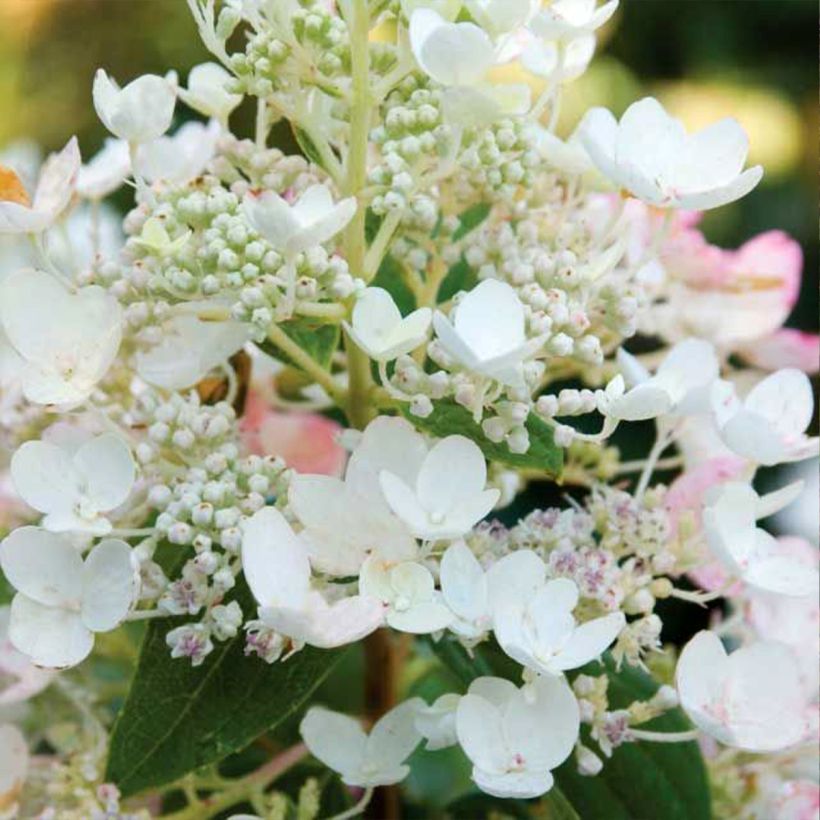

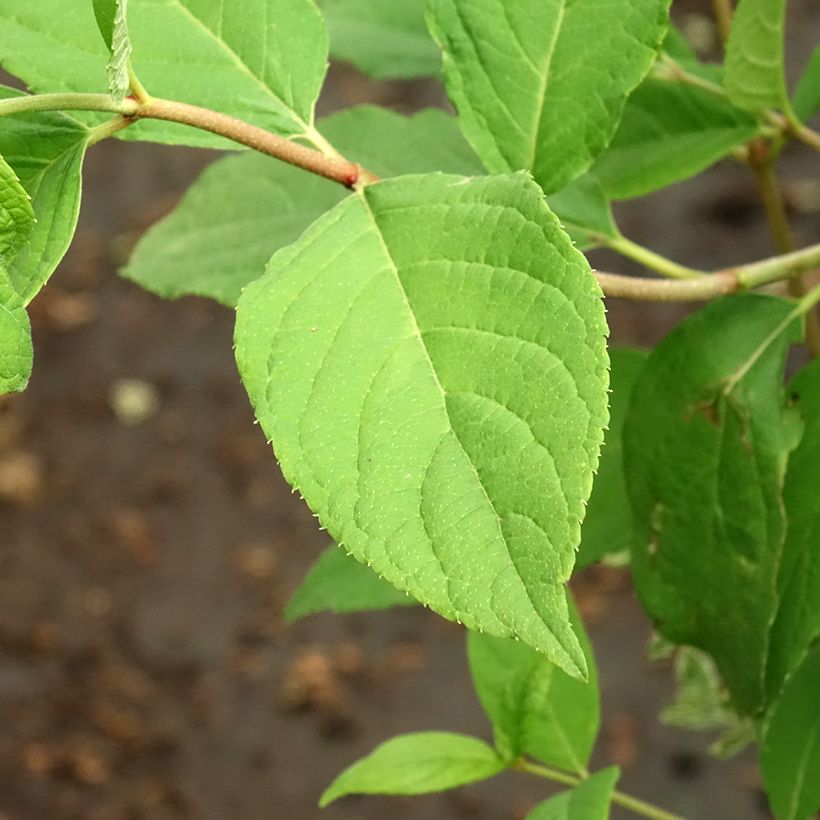

Plant habit
Flowering
Foliage
Botanical data
Hydrangea
paniculata
Tickled Pink®
Hydrangeaceae
Paniculate Hydrangea, Panicled Hydrangea, Panicle Hydrangea
Cultivar or hybrid
Other Hydrangea Paniculata
Planting and care
The Hydrangea paniculata Tickled Pink is not very demanding on the nature of the soil, as long as it is not too heavy. It does not require heathland soil and can grow in neutral soil and even tolerate some limestone. It also adapts well to sandy or rocky terrain as long as it remains slightly moist, or by being well watered. In these conditions, it is advisable to add compost to the base of the bush every year.
It requires a sunny exposure, not scorching or semi-shaded. At planting, place it in deeply worked soil, after soaking the root ball in a bucket of water for half an hour. A good base fertilizer (horn or dehydrated blood) will promote the growth of your plant and nourish it without risk of burning. If your soil tends to be dry, mix compost with the soil when filling the planting hole and provide a watering basin on the surface.
At the end of summer, we recommend not cutting the dry panicles that will protect the terminal shoots of the branches in winter. Cut all the dry flowers at the end of February or at the first signs of spring and remove some branches by pruning them very short every year to promote the growth of new shoots.
Planting period
Intended location
Care
-
, onOrder confirmed
Reply from on Promesse de fleurs
Haven't found what you were looking for?
Hardiness is the lowest winter temperature a plant can endure without suffering serious damage or even dying. However, hardiness is affected by location (a sheltered area, such as a patio), protection (winter cover) and soil type (hardiness is improved by well-drained soil).

Photo Sharing Terms & Conditions
In order to encourage gardeners to interact and share their experiences, Promesse de fleurs offers various media enabling content to be uploaded onto its Site - in particular via the ‘Photo sharing’ module.
The User agrees to refrain from:
- Posting any content that is illegal, prejudicial, insulting, racist, inciteful to hatred, revisionist, contrary to public decency, that infringes on privacy or on the privacy rights of third parties, in particular the publicity rights of persons and goods, intellectual property rights, or the right to privacy.
- Submitting content on behalf of a third party;
- Impersonate the identity of a third party and/or publish any personal information about a third party;
In general, the User undertakes to refrain from any unethical behaviour.
All Content (in particular text, comments, files, images, photos, videos, creative works, etc.), which may be subject to property or intellectual property rights, image or other private rights, shall remain the property of the User, subject to the limited rights granted by the terms of the licence granted by Promesse de fleurs as stated below. Users are at liberty to publish or not to publish such Content on the Site, notably via the ‘Photo Sharing’ facility, and accept that this Content shall be made public and freely accessible, notably on the Internet.
Users further acknowledge, undertake to have ,and guarantee that they hold all necessary rights and permissions to publish such material on the Site, in particular with regard to the legislation in force pertaining to any privacy, property, intellectual property, image, or contractual rights, or rights of any other nature. By publishing such Content on the Site, Users acknowledge accepting full liability as publishers of the Content within the meaning of the law, and grant Promesse de fleurs, free of charge, an inclusive, worldwide licence for the said Content for the entire duration of its publication, including all reproduction, representation, up/downloading, displaying, performing, transmission, and storage rights.
Users also grant permission for their name to be linked to the Content and accept that this link may not always be made available.
By engaging in posting material, Users consent to their Content becoming automatically accessible on the Internet, in particular on other sites and/or blogs and/or web pages of the Promesse de fleurs site, including in particular social pages and the Promesse de fleurs catalogue.
Users may secure the removal of entrusted content free of charge by issuing a simple request via our contact form.
The flowering period indicated on our website applies to countries and regions located in USDA zone 8 (France, the United Kingdom, Ireland, the Netherlands, etc.)
It will vary according to where you live:
- In zones 9 to 10 (Italy, Spain, Greece, etc.), flowering will occur about 2 to 4 weeks earlier.
- In zones 6 to 7 (Germany, Poland, Slovenia, and lower mountainous regions), flowering will be delayed by 2 to 3 weeks.
- In zone 5 (Central Europe, Scandinavia), blooming will be delayed by 3 to 5 weeks.
In temperate climates, pruning of spring-flowering shrubs (forsythia, spireas, etc.) should be done just after flowering.
Pruning of summer-flowering shrubs (Indian Lilac, Perovskia, etc.) can be done in winter or spring.
In cold regions as well as with frost-sensitive plants, avoid pruning too early when severe frosts may still occur.
The planting period indicated on our website applies to countries and regions located in USDA zone 8 (France, United Kingdom, Ireland, Netherlands).
It will vary according to where you live:
- In Mediterranean zones (Marseille, Madrid, Milan, etc.), autumn and winter are the best planting periods.
- In continental zones (Strasbourg, Munich, Vienna, etc.), delay planting by 2 to 3 weeks in spring and bring it forward by 2 to 4 weeks in autumn.
- In mountainous regions (the Alps, Pyrenees, Carpathians, etc.), it is best to plant in late spring (May-June) or late summer (August-September).
The harvesting period indicated on our website applies to countries and regions in USDA zone 8 (France, England, Ireland, the Netherlands).
In colder areas (Scandinavia, Poland, Austria...) fruit and vegetable harvests are likely to be delayed by 3-4 weeks.
In warmer areas (Italy, Spain, Greece, etc.), harvesting will probably take place earlier, depending on weather conditions.
The sowing periods indicated on our website apply to countries and regions within USDA Zone 8 (France, UK, Ireland, Netherlands).
In colder areas (Scandinavia, Poland, Austria...), delay any outdoor sowing by 3-4 weeks, or sow under glass.
In warmer climes (Italy, Spain, Greece, etc.), bring outdoor sowing forward by a few weeks.

































